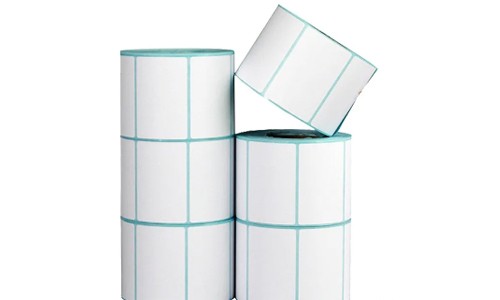
Adhesive labels, also known as self-adhesive label materials, are composite materials composed of facestock (paper, film, or specialty materials), a pressure-sensitive adhesive backing, and a silicone-coated release liner. After processes like printing and die-cutting, they become finished labels.
Varieties arise primarily from differences in the three components—facestock, adhesive (pressure-sensitive adhesive), and liner (silicone-coated release material)—with various combinations creating diverse label materials.
Adhesive issues often surface during labeling or after prolonged contact with items, causing significant user losses. Severe adhesive leakage may damage printing equipment. Low-quality liners or poor silicone coating can lead to problems like die-cutting penetration, label flying off, misfeeding, or paper jams during use, resulting in substantial losses.
I. Facestock Materials
The most common facestock materials are paper-based and synthetic films.
Common types and characteristics:
Offset Paper: Also known as writing paper or woodfree paper. Uncoated matte surface, typically used for monochrome printing or barcode labels.
Coated Paper: Medium-gloss paper with a coated surface. Lower brightness than cast-coated paper. Widely used in color printing for pharmaceuticals, food, and as a substrate for thermal transfer barcode labels.
Cast-Coated Paper: Super-calendered with high surface gloss. Used for labels requiring vibrant colors (e.g., pharmaceuticals, health products).
Thermal Paper: Common for supermarket tags and logistics labels.
Thermal Transfer Paper: Developed specifically for thermal transfer printing. Features a special coating that ensures high-quality barcode printing without gaps or breaks, preventing scanning failures. More durable and fade-resistant than coated paper.
Laser Printing Paper: Standard offset paper is common but prone to adhesive leakage under high printer temperatures/speeds, damaging equipment. Specialty laser label paper resolves this. Other paper types (e.g., fragile paper, foil paper) are used for food, health products, and alcohol.
PE Film: Polyethylene film, available in glossy white, matte white, silver, and transparent. Flexible, water-/oil-/crush-resistant. Widely used for daily chemicals (shampoo, shower gel).
PP Film: Polypropylene film, available in glossy/matte white, silver, and transparent. Water-/oil-resistant with high stiffness. Ultra-clear PP labels create a "no-label" effect on transparent bottles. Used in cosmetics and daily chemicals.
PET Film: Polyester film, treated or untreated. Options include glossy/matte white, transparent, and metallized silver. High stiffness, resistant to water, heat, oil, and solvents. Ideal for flat surfaces (electronics, machinery).
PVC Film: Polyvinyl chloride film, available in transparent, white, and matte white. Water-/oil-/solvent-resistant. Used for chemical products. Shrink PVC is applied in battery labels.
II. Adhesives
Facestock acts as the printing carrier, but adhesive performance dictates label functionality. Common types include:
Permanent Adhesives: For electronics/machinery (e.g., mobile battery labels).
Removable Adhesives: For food, personal care, or items requiring temporary labeling (e.g., glassware, stationery, furniture, appliance energy labels).
Adhesive categories and properties:
Hot-Melt Adhesive (Rubber-based):
Pros: Strong flow/viscosity; suitable for low temperatures (-5 to -10°C); eco-friendly; adheres to slightly oily/wet surfaces.
Cons: Low heat resistance (<70°C); brittle below 15°C; poor repositionability; incompatible with PVC.
Applications: Food, pharmaceuticals, supermarket labels.
Water-Based Adhesive (Acrylic):
Pros: High adhesion; most are eco-friendly; heat-resistant (up to 90°C, some to 150°C).
Cons: Poor low-temperature performance; ineffective on wet/oily surfaces.
Applications: Food, pharmaceuticals, daily chemicals, eco-sensitive industrial labels.
Solvent-Based Adhesive:
Superior waterproofing and aging resistance compared to water-based variants. Strong adhesion, repositionable, made from acrylic/vinyl acetate monomers. Used for tapes, films, and labels in packaging, automotive, construction, and metal/plastic applications.
III. Processing Techniques
Die-Cutting:
Widely used for irregularly shaped labels, enabling non-rectangular forms via custom dies.
Scoring:
Creates creases or grooves for precise folding.
Perforating:
Adds perforations for easy tearing (less common).
Creasing:
Produces fold lines to facilitate shaping.
 HOT LINE: 086-577-65159218
HOT LINE: 086-577-65159218












